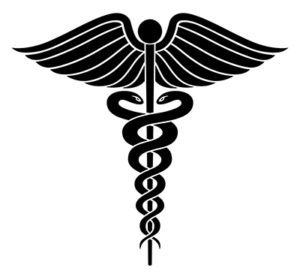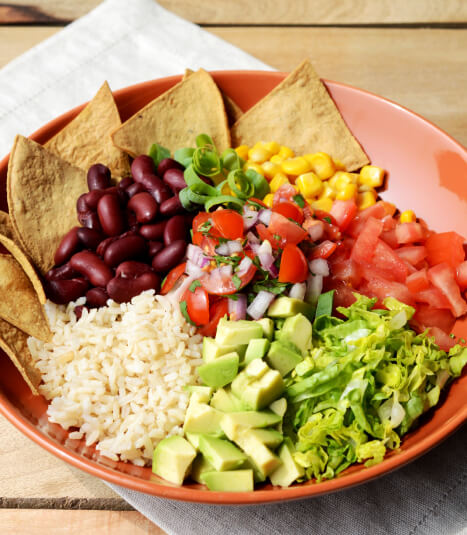Favorite 5 Articles from the December 2003 Newsletter
My Favorite 5 Articles from Last Month’s Medical Journals
Fish Promotes Breast Cancer
Fish intake is positively associated with breast cancer incidence rate published in the November 2003 issue of the Journal of Nutrition by Connie Stripp found the risk of a woman developing breast cancer increases when she eats more fish. The investigation studied 23,693 postmenopausal women, average age of 57 years. For each 25 grams (less than an ounce) of lean fish consumed daily there was a 13% increase in risk of breast cancer. For fatty fish the increase was 11% for each 25 grams. These findings are exactly the opposite of most of those that are found in experiments done in laboratories on animals. This may be because the laboratory experiments testing the link between fish fats (omega-3 fats) and cancer feed only omega-3 fats to the animals studied – A diet that includes only omega-3 fats would never be found in natural living conditions. In the real world where a mixture of fats is consumed, fish fat can be very cancer-promoting. Here are a few possible reasons:
1) Fish and fish fat are known to suppress our cancer-fighting immune system.
2) Fish is contaminated with cancer-causing environmental chemicals (like heavy metals and pesticides).
3) Cooking fish produces powerful carcinogens called heterocyclic amines.
For supporting research and more reasons to avoid fish in your health-supporting diet see my February 2003 Newsletter.
Stripp C, Overvad K, Christensen J, Thomsen BL, Olsen A, Moller S, Tjonneland A. Fish intake is positively associated with breast cancer incidence rate. J Nutr. 2003 Nov;133(11):3664-9.
Plant-based Diets Reduce C-reactive Protein and Heart Disease
Relation of dietary fat and fiber to elevation of C-reactive protein published in the December 2003 issue of the American Journal of Cardiology by Dana King found that people with diets high in fiber and low in saturated fats had lower levels of a risk factor for predicting heart disease. A diet high in fiber and low in saturated fat is a diet based upon plant foods.
C-reactive protein is a very sensitive indicator of inflammation anywhere in the body. It is non-specific – in other words, it does not tell you the source of the inflammation – it could be an infection in your toe, arthritis in your knuckles, or a bad cold. C-reactive protein provides non-specific information similar to the elevation of the body temperature, called a ‘fever.’ This protein is measured by a blood test. When the walls of your arteries are inflamed during the acute stages of atherosclerosis, C-reactive protein will rise – in this way this protein may predict your future risk of artery failure, commonly known as a heart attack or a stroke.
The inflammatory disease of the arteries can best be pictured as sores or pustules lining the inside walls. The life-threatening event occurs when one of these pustules ruptures; causing a blood clot to form – occluding the flow of blood to vital tissues, like the heart or brain. When you understand the inflammatory story behind artery disease, you then know the reason why a healthier diet, based on plant foods, results in lower C-reactive protein levels. The most important message from this study is to focus your attention on the eating behavior that improves C-reactive protein; a diet based on starches, vegetables and fruits. This is the same diet that improves all other risk factors, including cholesterol, homocysteine, triglycerides, blood sugar and uric acid levels, and saves your life.
King DE, Egan BM, Geesey ME. Relation of dietary fat and fiber to elevation of C-reactive protein. Am J Cardiol. 2003 Dec 1;92(11):1335-9.
Cheap, Immediate-acting Niacin Is Best
Varying cost and free nicotinic acid content in over-the-counter niacin preparations for dyslipidemia by C. Daniel Meyers in the December 16, 2003 issue of the Annals of Internal Medicine found the least expensive, most effective and safest forms of niacin are plain immediate-acting varieties bought over the counter in most pharmacies and natural foods stores. Most important, the ‘no-flush’ varieties of niacin (inositol hexaniacinate) are useless and should be avoided – they contain no free nicotinic acid and are also the most expensive ($21.70). Sustained-released niacin preparations are effective, less expensive ($9.76/month), but serious side effects, like liver damage, may occur with some brands. Some sustained-release preparations, like Slo-niacin, Enduracin and Niaspan (by prescription), have a record of safety. Slo-niacin contains heart-disease-promoting hydrogenated vegetable oils (trans-fatty acids) – this makes no sense – read the ingredient labels of all medications carefully. Immediate-acting niacin is least expensive ($7.10/month) and is most effective.
In 1955 Niacin (vitamin B3) was found to lower cholesterol and triglycerides by 20% to 50%. LDL-cholesterol is lowered by 10% to 25% and HDL-cholesterol is increased by 10% to 30%. Most importantly, niacin has been shown to reduce the risk of heart attacks and the risk of overall death by 11% after 9 years. The most common side effect is flushing, but people adjust to this in time. Serious side effects like liver toxicity, and elevated glucose and uric acid, can also occur. Dosages of immediate-acting niacin should be started at 250 mg daily, then gradually increased to 500 mg three times a day after meals. Dosages as high as 2000 mg to 6000 mg are effective and can be safely taken. Periodic liver tests and doctor’s supervision are important for anyone taking this kind of serious drug therapy in order to reduce the risk of cardiovascular disease.
A form of this vitamin called nicotinamide has few side effects, but does not work. More on niacin therapy can be found in my February 2003 newsletter.
Meyers CD, Carr MC, Park S, Brunzell JD. Varying cost and free nicotinic acid content in over-the-counter niacin preparations for dyslipidemia. Ann Intern Med. 2003 Dec 16;139(12):996-1002.
Lipitor Is Not Proven Better Than Pravachol
Intensive statin regimen can stop atherosclerosis – some experts urge caution about posthoc analysis of LDL cholesterol reduction by Michael Zoler in the December 1, 2003 issue of Internal Medicine News, questions a highly-publicized study concerning the superiority of Lipitor (atorvastatin). Pfizer, the manufacturer of Lipitor, sponsored this study which compared 80 mg daily of their powerful agent against 40 mg daily of Pravachol (pravastatin). After 18 months of treatment, 256 patients taking Lipitor found their LDL-cholesterol levels were reduced to 79 mg/dl, and there was observed a 0.4% reduction in artery disease. Pravachol, a much weaker statin, given at half the dose of Lipitor, reduced the LDL-cholesterol to 110 mg/dl in 249 patients and this group showed a 2.7% increase in artery disease in 18 months. Pfizer’s conclusion was Lipitor is better. Many doctors changed their prescribing practices and many more patients who read the newspaper stories demanded this ‘better’ drug from their doctors.
Obviously, no such conclusion of the superiority of Lipitor should have been reached from this research – they compared two statins of dissimilar potencies and dosages. However, what this study clearly showed is the necessity to lower LDL-cholesterol below 80 mg/dl to reverse atherosclerosis. (The goal I teach is to lower total cholesterol to below 150 mg/dl, which would be similar to an LDL-cholesterol goal of 80 mg/dl.) Insufficient Pravachol was given to patients in this study to achieve this ideal cholesterol level.
I usually prescribe Pravachol because this medication has the best record for reducing the risk of heart attacks and death – my goals for my patients. The approach I use is clearly described in my June 2003 Newsletter article ‘Cleaning out Your Arteries.’ Essentially, I prescribe a no-cholesterol, low-fat diet (plant-based diet) and add enough cholesterol-lowering medication to reduce the blood cholesterol level below 150 mg/dl (or the LDL-cholesterol below 80 mg/dl).
1) Zoler M. Intensive statin regimen can stop atherosclerosis – some experts urge caution about posthoc analysis of LDL cholesterol reduction. Int Med News 2003; 36 (23):1-2.
2) Ichihara K, Satoh K. Disparity between angiographic regression and clinical event rates with hydrophobic statins. Lancet. 2002 Jun 22;359(9324):2195-8.
Silver-colored Cars Are Safest
Car colour and risk of car crash injury: population based case control study by S. Furness in the December 20, 2003 issue of the British Medical Journal found silver-colored cars are 50% less likely to be involved in a crash resulting in serious injury than white cars. Green, black, and brown cars had twice the risk of being involved in a serious injury crash than white cars. Thus silver cars are four times safer than green, black, and brown cars. The data, gathered between April 1998 and June 1999, come from Auckland, New Zealand. No reason was given for these findings, but from my observation, it appears lighter and brighter colored cars (silver, yellow and white) are safer than darker cars (green, black and brown).
S. Furness, J Connor, E Robinson, R Norton, S Ameratunga, and R Jackson. Car colour and risk of car crash injury: population based case control study. BMJ 2003;327:1455-1456.
Recommended Articles

Working with MDs

Mary's Mini-McDougall Diet® - Answers to Common Questions







